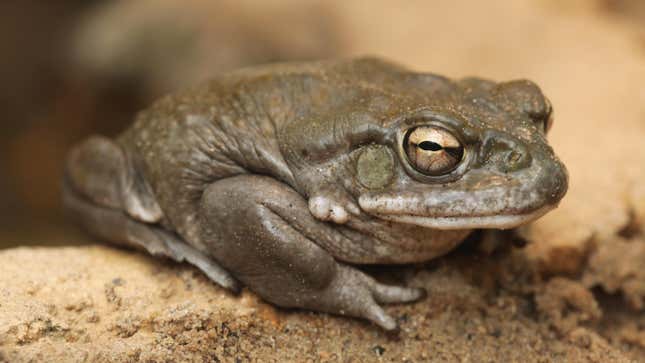
A potential depression treatment might someday come from trip-inducing toad venom. In a new study Wednesday, researchers appear to have deciphered the structural workings of a psychedelic compound derived from the Colorado River toad (Incilius alvarius). The team also tested a modified version of the compound in mice, finding it had antidepressant and antianxiety effects, and potentially without the psychedelic reactions that could complicate its safe use in humans.
Lately, psychedelics like LSD and psilocybin (the active ingredient in magic mushrooms) have received plenty of scientific attention as possible treatments for mental illness. Several clinical trials are currently testing these drugs for conditions such as depression, anxiety, and post-traumatic stress disorder. In June, outside experts affiliated with the Food and Drug Administration will evaluate Phase III data on using MDMA-assisted psychotherapy for PTSD, and it’s almost certain that a positive verdict will clear the way for FDA approval later this year.
Exciting as all this is, there’s still a lot that scientists are trying to figure out about how exactly these drugs work in the brain. Studies have found that the mind-altering effects of several popular psychedelics come largely from stimulating a certain class of serotonin receptors found on brain cells known as 5-HT2A receptors, for instance. But there are other types of 5HT receptors out there, as well as less studied psychedelics that seem to activate them.
Researchers at Mount Sinai and Columbia University decided to take a closer look at one of these psychedelics, called 5-MeO-DMT. This compound is found in the poison of the Colorado River toad (the common nickname of toad venom is a misnomer, since venoms are injected into a victim via fangs or other body parts). The drug is best known for its hallucinogenic and dissociative effects, while some surveys of users have also suggested that 5-MeO-DMT can induce a rapid drop in symptoms of depression and anxiety. Unlike some other psychedelics, however, 5-MeO-DMT appears to activate 5-HT1A receptors.
“We became intrigued by numerous reports of powerful, unique, and life-changing experiences associated with its ritualistic or experimental clinical use, which made us wonder about its therapeutic potential and the underlying mechanisms,” study author David Lankri, a neuropharmacologist at the Chemistry Department of Columbia University, told Gizmodo in an email.
The team studied 5-MeO-DMT using various methods of analysis, including cryogenic electron microscopy. This allowed them to confirm that 5-MeO-DMT activates both kinds of 5-HT receptors and to detail the exact structure of the compound.
From there, they created modified versions of it to better understand how it interacts with these receptors. They eventually created a variant of 5-MeO-DMT that was much more potent at activating 5-HT1A and tested it on mice made to develop symptoms of depression and anxiety. In these mice, the modified 5-MeO-DMT seemed to reliably induce antidepressant and antianxiety effects, and apparently without causing the typical psychedelic effects seen with the natural form.
“We showed that a selective compound—that almost entirely ‘ignores’ the psychedelic receptor—could be an effective treatment option for depression and anxiety,” Lankri said. The team’s findings were published Wednesday in Nature.
Studies like this one represent just the beginning of our efforts to understand these substances. Moreover, other well-known psychedelics are likely to be approved as mental health aids sooner than any treatments derived from 5-MeO-DMT or toad venom. Fun as tripping out might be, though, the classic psychedelic symptoms of these drugs will likely limit their widespread prescription and use as medical treatments. Similar drugs without these effects, Lankri noted, could likely be taken at home and wouldn’t require the costly supervision of a trained clinician. Simply having more effective depression drugs that work differently from one another is important, too, since some people will inevitably fail to respond to some of them.
So the researchers are hopeful about the potential of their research and where it may lead in the years to come. The team will continue to study 5-MeO-DMT, as well as the related drug ibogaine, which has also shown some promise as a depression and anxiety treatment.
“It is exciting to see detailed snapshots of the intricate dance of the receptor induced by the toad psychedelic and its molecular descendants,” Lankri said. “These new insights may prove useful in the development of the next generations of psychedelic-inspired medicines while revealing the beauty of the molecular world.”